|
Plover, Wisconsin; March, 2020
The title of this page might be misleading. |
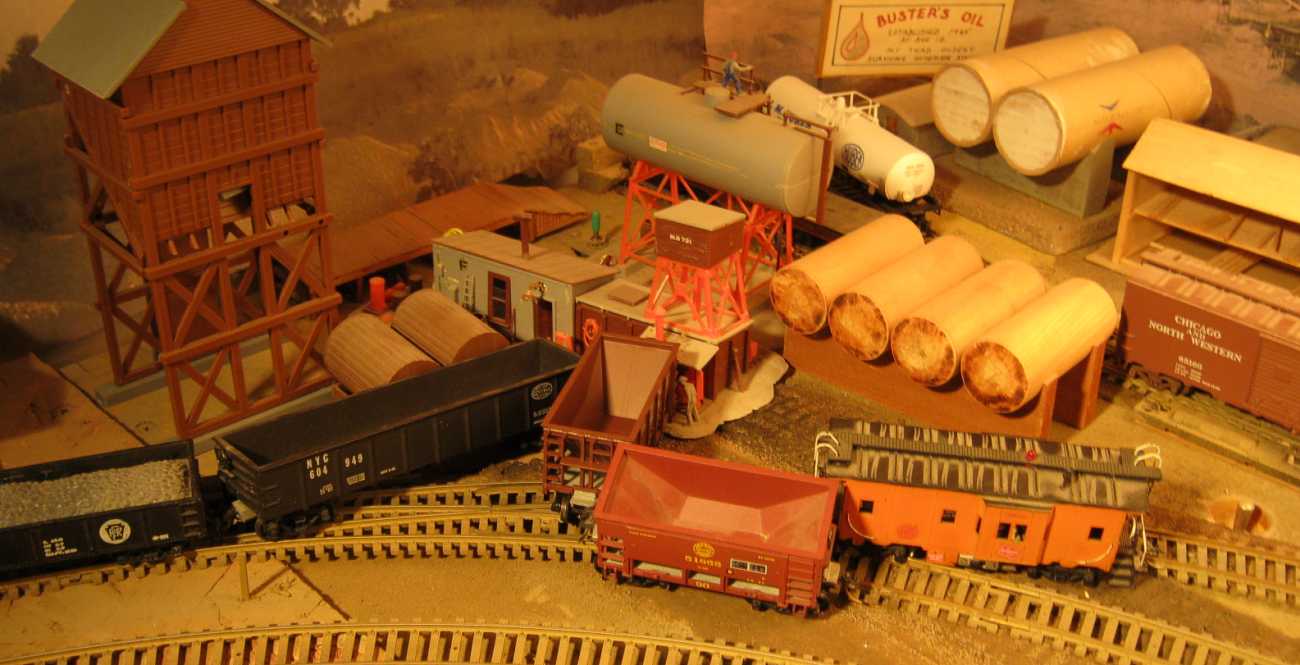
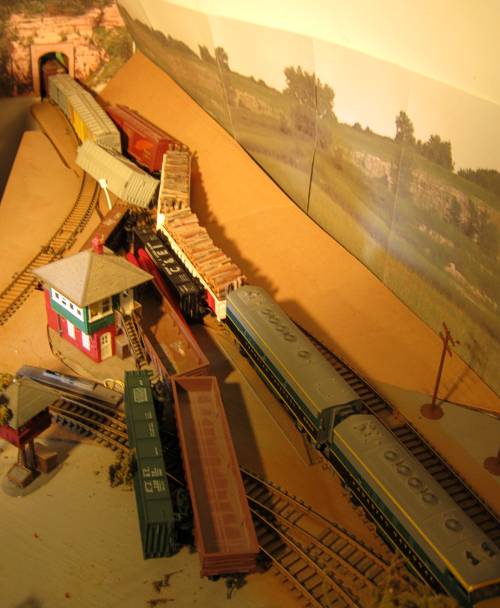 .
.
Things got out of hand when I was in the other room, 5-inches away through the tunnel in the wall
and I had to back up a train, without watching what is happening to the head end.
| This was the junction, before I added the engine house tracks. |
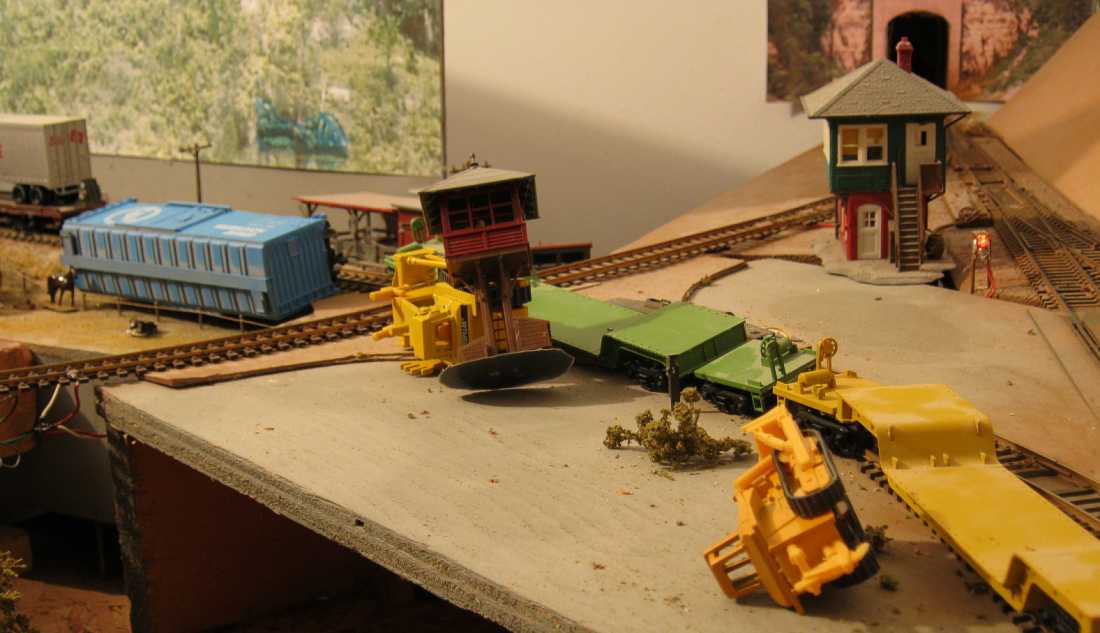
| The air hose on the caboose coupler was hanging low and snagged the diamond. |
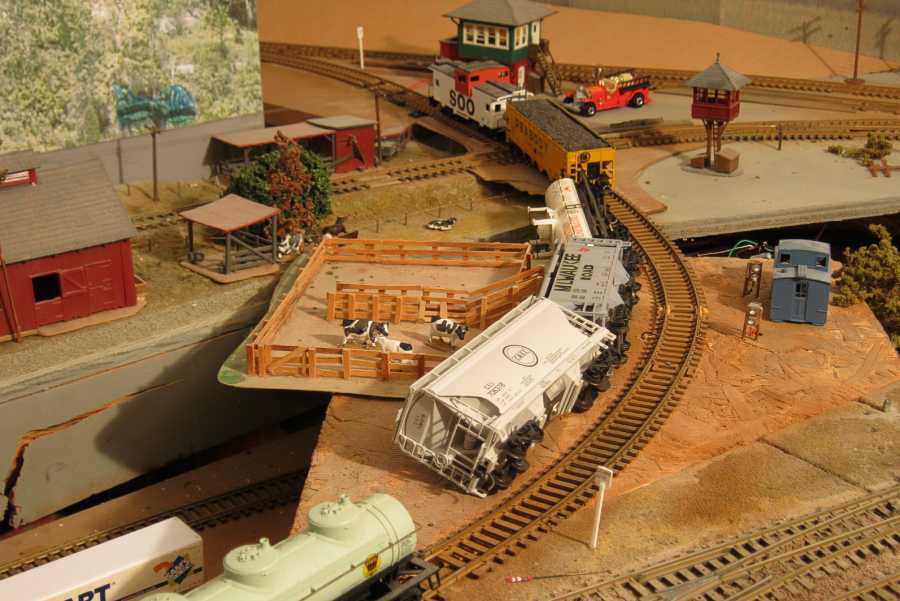
|
There's nothing like building a model railroad for years and using a 3" vertical clearance, and then I got a 'modern' double stack which needs 3-1/8". I had to raise some bridges and cut and file to open up some tunnels. |
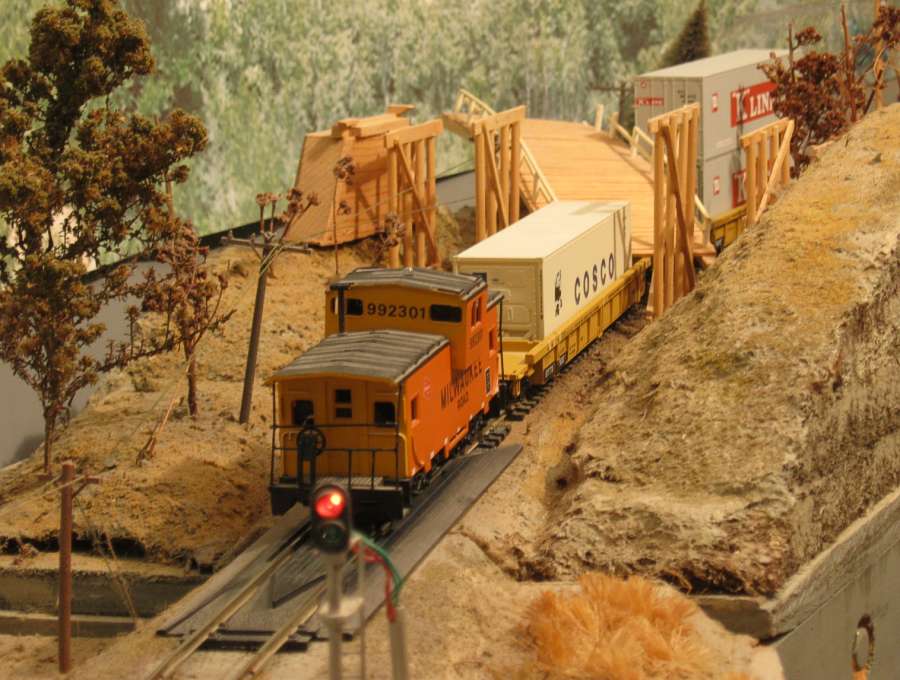
| Split the switch in the middle of a car. |
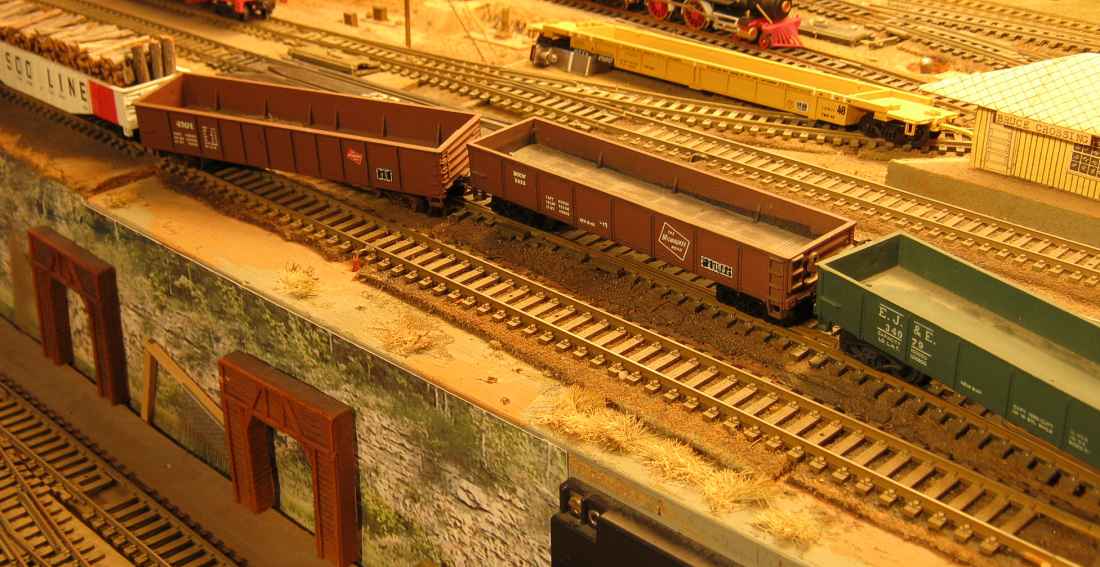
|
And there's nothing wrecked in this view, but this month, a real Russel plow and a Jordan Spreader were cut up for scrap in Stevens Point. |

|
I was standing in the other room at the other end of this 5-inch long tunnel through the wall, that had a loose paper picture face, and I hear ker- plunk. |

|
And this train left the yard, and then I walked around the corner and out of sight. And then I look back, and see only the engine moving. Oh, I thought it just uncoupled. Then I looked closer, there had been a caboose between the engine and boxcar, and it had fallen to the lower level of track. |
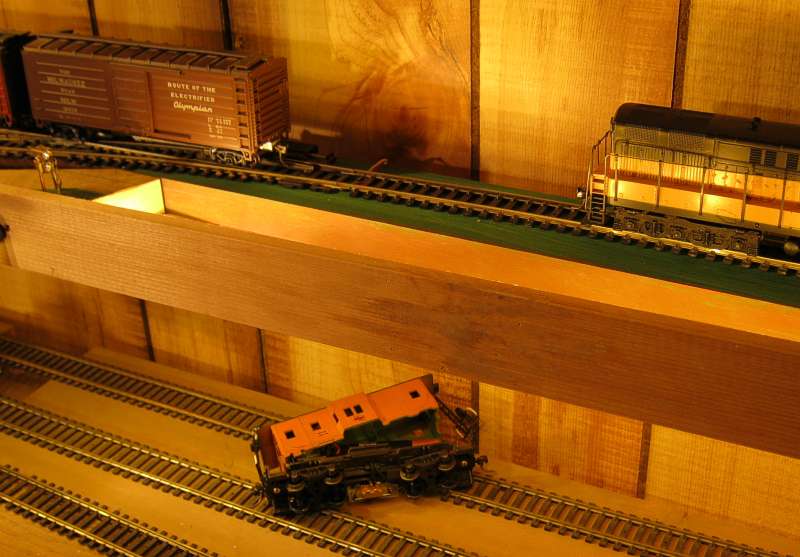
|
And this one shows the importance of a protective gate, and some padding. I have drawbridges with swinging gates to protect against running a train into the river (onto the floor). And usually it's not the engine that threatens to take a dunk, it's the caboose during a reverse movement that is hidden and not watched by the crew.
The caboose must have pressed against the gate, and then popped off to the side. |
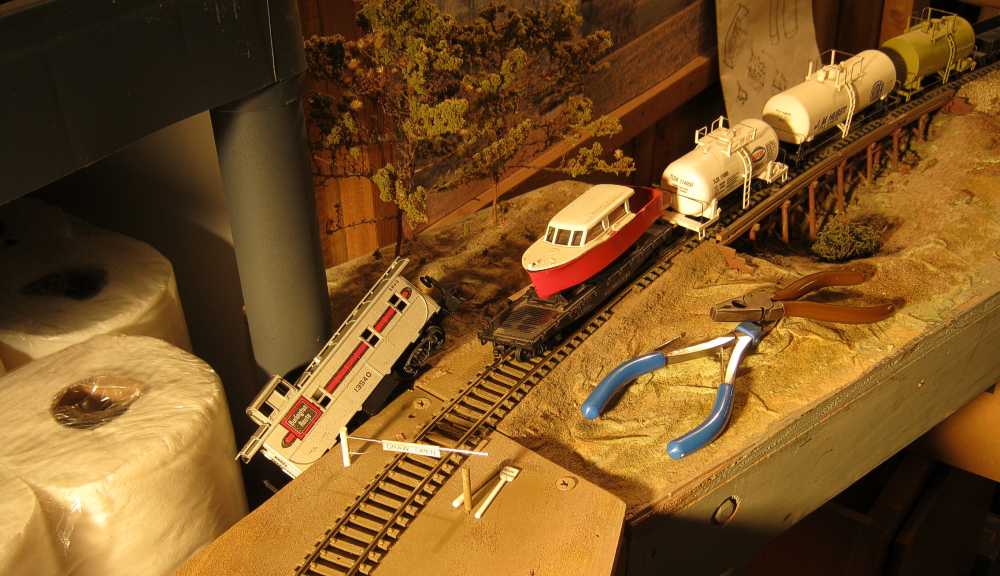
| That's a 1965 Athearn boat on flatcar. Handy, for river rescues? |
. . . . . to My Main Index Page on the TrainWeb site.
This page was filmed in Febuary and March, 2020.